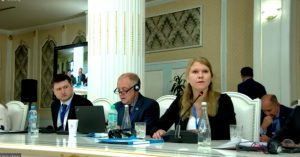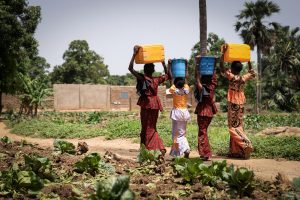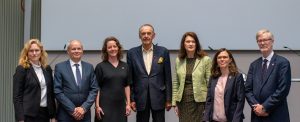How can cities become more water resilient?
“Although the concept of resilience has been well covered in the literature and is gaining popularity, there is a gap in the resilience characteristics illustrated in theories and how practitioners perceive its practical applicability. ”
Assessing gaps to inform action
The authors have taken a step further in demonstrating the need for such frameworks. Multistakeholder implementation workshops were conducted in Cape Town and Greater Miami and the Beaches for city stakeholders to assess existing gaps. The qualitative indicators further helped to inform development of water resilience solutions and actions.
By assessing their current water resilience capacities, cities will be able to identify key actions around climate change mitigation and adaptation. At the same time, they can improve the urban water supply distribution, wastewater treatment and sanitation services by enhancing the overall urban water planning, policies, regulations and legislation. The assessment is intended to guide decision making and future investment around smart urban infrastructure design, land planning, and restoring its degrading ecosystem for the wellbeing of its people.
 Workshop in Cape Town to demonstrate the framework's applicability. Photo credit: ARUP
Workshop in Cape Town to demonstrate the framework's applicability. Photo credit: ARUP By cities for cities
Lastly, the framework is built using the collective knowledge of stakeholders that are concerned with cities. There was direct engagement with public, private, civil society, academic groups from eight partner cities of Amman, Cape Town, Hull, Mexico City, Greater Miami and the Beaches, Rotterdam, Thessaloniki and Greater Manchester. This helped to gather relevant evidence, validate and refine the early framing of CWRF.
The framework is already seeing impact in the two cities where workshops were conducted. Miami’s Resilient305 strategy has incorporated the framework’s results, and Cape Town will include it in its Water Strategy implementation plan.
Applicability of the City Water Resilience Framework
Who can use it?
This study will be useful in dissemination of the framework to a wider audience, particularly to city governments, urban water utilities and companies and others who would be interested to apply the framework in their city through a collective and multi-stakeholder process.
How is it useful for researchers?
It will also provide guidance for academia and researcher with an interest in action and transdisciplinary research to build the capacity of cities around water resilience, and in understanding the concept around urban water resilience, beyond the theoretical discourse to as a problem solving and decision-making approach.
What can they gain ?
The stakeholders will be able to build the capacity of an urban water sector for efficient management of its water resources and services, for the system to be able to face and adapt to water related shocks and stresses.
By cities for cities
Direct engagement with city stakeholder groups of public, private, civil society, academia from eight partner cities of Amman, Cape Town, Hull, Mexico City, Greater Miami and the Beaches, Rotterdam, Thessaloniki and Greater Manchester helped to gather relevant evidence, validate and refine the early framing of City Water Resilience Framework.
Read the publicationNote:
The authors of this publication Panchali Saikia, George Beane, Ricard Giné Garriga, Pilar Avello, Louise Ellis, Sophie Fisher, James Leten, Iñigo Ruiz-Apilánez, Martin Shouler, Robin Ward and Alejandro Jiménez contributed with varied expertise, ranging from water resilience, water governance, water, sanitation and hygiene, and water resources management to urban planning, public health engineering, environmental engineering, asset management, strategy development and business planning.









